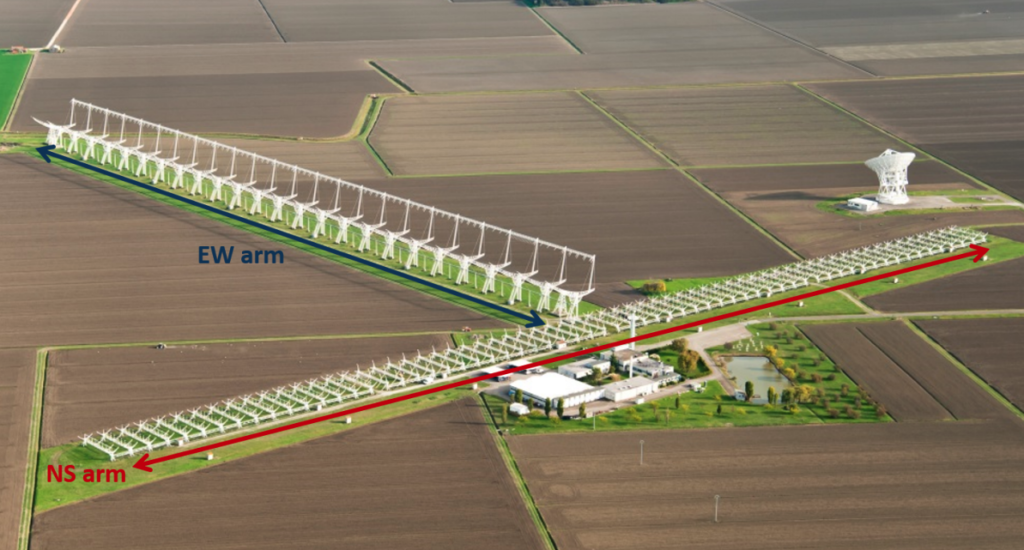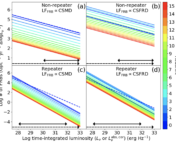Title: The Northern Cross Fast Radio Burst project. I. Overview and pilot observations at 408 MHz
Authors: Nicola T. Locatelli, Gianni Bernardi, Germano Bianchi, Riccardo Chiello, Alessio Magro, Giovanni Naldi, Maura Pilia, Giuseppe Pupillo, Alessandro Ridolfi, Giancarlo Setti, Franco Vazza
First Author’s Institution: Dipartimento di Fisica e Astronomia, Universitá di Bologna, Via Gobetti 93/2, 40129 Bologna, Italy, and INAF-Istituto di Radio Astronomia, via Gobetti 101, 40129 Bologna, Italy
Status: Submitted to MNRAS [open access on the arXiv]
The instruments behind FRB discoveries
Fast radio bursts (FRBs)—a mysterious, energetic, and faraway group of astrophysical phenomena—are a rapidly paced and exciting field of study. FRBs have been covered in three previous astrobites this year alone (here, here, and here), and each different astrobite (coincidentally) featured a different instrument that detected FRBs! Although instrumentation is often overlooked in press releases of scientific discoveries, many scientific advances wouldn’t have been possible without thoughtfully designed instruments. So, instrumentation-wise, what’s on the horizon for detecting FRBs? Today’s paper covers the instrumentation upgrade of the Northern Cross radio telescope in Italy, with the eventual goal of being able to survey the sky for FRBs.
The current, then new, life of a radio telescope
The Northern Cross radio telescope is located at the Medicina Radio Astronomical Station in Italy, and is a T-shaped radio interferometer (Figure 1). The two arms that make up the “T” are aligned along the East-West and North-South directions, although today’s paper only focuses on the North-South arm. Along the North-South arm, there are 64 antennae linearly spaced 10 meters apart, with an effective total collecting area of 8000 square meters (about the area of a soccer field). Each antenna is a reflective parabolic cylinder, reflecting and then focusing the incoming radiation. This instrument has been used to survey the sky for extragalactic radio sources and operates at a central frequency of 408 MHz, a lower radio frequency than the GHz frequencies FRBs were originally detected at.

Currently, the cylinders on the North-South arm are undergoing upgrades of their receiving system. The digital backend is also important for being able to process the incoming radiation; there is hardware for both data acquisition and signal processing. The data acquisition system processes data streams received at the computing server and then sends the data for signal processing, which is done on two Field Programmable Gate Array (FPGA) devices (circuits that can be programmed to carry out one or more logic operations). Included in the signal processing step is beamforming, the digital combining of data from various radio antennae to maximize sensitivity to signals. After signal processing, the output data is transferred to a processing server.
The hardware and software upgrades have been completed for eight cylinders. Although the system described is already a major improvement over the system used in the late nineties, there are still further improvements the scientists are considering to optimize the telescope for observing FRBs. For example, the current beamformer can produce four independent beams, but re-designing is in place for the beamformer to produce up to twenty independent beams so as to maximize instantaneous sky coverage. Additionally, an online FRB search pipeline is being developed in order for the Northern Cross telescope to find the dispersion measure that maximizes the signal-to-noise of the radio pulses (de-disperse them), identify FRB candidates, automatically flag radio frequency interference more often, and store data for further reprocessing.

How do we know the upgrades will work?
With every upgrade to a system, tests must be done to ensure that the upgrades behave as expected and to check for possible unconsidered sources of error. Using six of the eight fully upgraded cylinders, test observations were conducted of the pulsar PSR B0329+54 (Figure 2) to characterize the telescope’s sensitivity. Combined with estimates of the FRB event rate at the relevant low frequencies, the authors of today’s paper estimate that with sixty fully upgraded cylinders, the Northern Cross telescope would be able to conduct a “blind” survey (i.e. scanning the sky without a target) that covers up to 350 square degrees of the sky at once. (For comparison, the Moon covers about 0.2 square degrees of the sky.) Additionally, due to the telescope’s large collecting area and field of view, it is possible that with these full upgrades, FRBs can be probed out to a distant redshift of ~5. These initial estimates show that once the Northern Cross telescope becomes dedicated to observing FRBs, it could achieve performance comparable to that of another successful FRB detector, the CHIME/FRB instrument, within the surveyed frequency bandwidth of 400–416 MHz.
As the upgrades are being deployed to the rest of the cylinders on the instrument, the currently existing system (with eight cylinders and a field of view of ~9.4 square degrees) can still monitor known FRBs (repeaters). Fortunately, with about twenty repeating FRBs already known, there is plenty of FRB science the Northern Cross telescope can do in the meantime!




